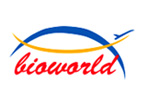Product Name :
CD281 Recombinant Protein Swiss-Prot :
Q15399 Host :
E.coli Tag :
Amino acid Sequence :
GSMDRSKNGLIHVPKDLSQKTTILNISQNYISELWTSDILSLSKLRILIISHNRIQYLDISVFKFNQELEYLDLSHNKLVKISCHPTVNLKHLDLSFNAFDALPICKEFGNMSQLKFLGLSTTHLEKSSVLPIAHLNISKVLLVLGETYGEKEDPEGLQDFNTESLHIVFPTNKEFHFILDVSVKTVANLELSNIKCVLEDNKCSYFLSILAKLQTNPKLSNLTLNNIETTWNSFIRILQLVWHTTVWYFSISNVKLQGQLDFR-LE Restriction sites :
BamHI-XhoI Background :
Members of the Toll-like receptor (TLR) family, named for the closely related Toll receptor in Drosophila, play a pivotal role in innate immune responses. TLRs recognize conserved motifs found in various pathogens and mediate defense responses. Triggering of the TLR pathway leads to the activation of NF-κB and subsequent regulation of immune and inflammatory genes. The TLRs and members of the IL-1 receptor family share a conserved stretch of approximately 200 amino acids known as the Toll/Interleukin-1 receptor (TIR) domain. Upon activation, TLRs associate with a number of cytoplasmic adaptor proteins containing TIR domains, including myeloid differentiation factor 88 (MyD88), MyD88-adaptor-like/TIR-associated protein (MAL/TIRAP), Toll-receptor-associated activator of interferon (TRIF), and Toll-receptor-associated molecule (TRAM). This association leads to the recruitment and activation of IRAK1 and IRAK4, which form a complex with TRAF6 to activate TAK1 and IKK. Activation of IKK leads to the degradation of IκB, which normally maintains NF-κB in an inactive state by sequestering it in the cytoplasm. Toll-like receptor expression is highest in peripheral blood leukocytes, monocytes, macrophages, though TLR1 expression may be less restricted than other family members. TLR1 associates with TLR2 to cooperatively mediate immune responses to bacterial lipoproteins and lead to NF-κB activation. TLR1 shows highest homology to TLR6, which shares 69% sequence identity. Soluble :
0.5M Urea, PH7.4 Purification&Purity :
Transferred into competent cells and the supernatant was purified by NI column affinity chromatography and the purity is > 85% (by SDS-PAGE). Storage&Stability :
Store at 4°C short term. Aliquot and store at -20°C long term. Avoid freeze-thaw cycles. Expression vector :
pSmart-I BiowMW :
For research use only, not for use in diagnostic procedure. Note :
500ug/1mg concentration :
CD281 Recombinant Protein Swiss-Prot :
Q15399 Host :
E.coli Tag :
Amino acid Sequence :
GSMDRSKNGLIHVPKDLSQKTTILNISQNYISELWTSDILSLSKLRILIISHNRIQYLDISVFKFNQELEYLDLSHNKLVKISCHPTVNLKHLDLSFNAFDALPICKEFGNMSQLKFLGLSTTHLEKSSVLPIAHLNISKVLLVLGETYGEKEDPEGLQDFNTESLHIVFPTNKEFHFILDVSVKTVANLELSNIKCVLEDNKCSYFLSILAKLQTNPKLSNLTLNNIETTWNSFIRILQLVWHTTVWYFSISNVKLQGQLDFR-LE Restriction sites :
BamHI-XhoI Background :
Members of the Toll-like receptor (TLR) family, named for the closely related Toll receptor in Drosophila, play a pivotal role in innate immune responses. TLRs recognize conserved motifs found in various pathogens and mediate defense responses. Triggering of the TLR pathway leads to the activation of NF-κB and subsequent regulation of immune and inflammatory genes. The TLRs and members of the IL-1 receptor family share a conserved stretch of approximately 200 amino acids known as the Toll/Interleukin-1 receptor (TIR) domain. Upon activation, TLRs associate with a number of cytoplasmic adaptor proteins containing TIR domains, including myeloid differentiation factor 88 (MyD88), MyD88-adaptor-like/TIR-associated protein (MAL/TIRAP), Toll-receptor-associated activator of interferon (TRIF), and Toll-receptor-associated molecule (TRAM). This association leads to the recruitment and activation of IRAK1 and IRAK4, which form a complex with TRAF6 to activate TAK1 and IKK. Activation of IKK leads to the degradation of IκB, which normally maintains NF-κB in an inactive state by sequestering it in the cytoplasm. Toll-like receptor expression is highest in peripheral blood leukocytes, monocytes, macrophages, though TLR1 expression may be less restricted than other family members. TLR1 associates with TLR2 to cooperatively mediate immune responses to bacterial lipoproteins and lead to NF-κB activation. TLR1 shows highest homology to TLR6, which shares 69% sequence identity. Soluble :
0.5M Urea, PH7.4 Purification&Purity :
Transferred into competent cells and the supernatant was purified by NI column affinity chromatography and the purity is > 85% (by SDS-PAGE). Storage&Stability :
Store at 4°C short term. Aliquot and store at -20°C long term. Avoid freeze-thaw cycles. Expression vector :
pSmart-I BiowMW :
For research use only, not for use in diagnostic procedure. Note :
500ug/1mg concentration :
Blocking peptide available as NCP0457P

 CD281 Recombinant Protein
CD281 Recombinant Protein 

 Datasheet
Datasheet COA
COA MSDS
MSDS SHIP
SHIP